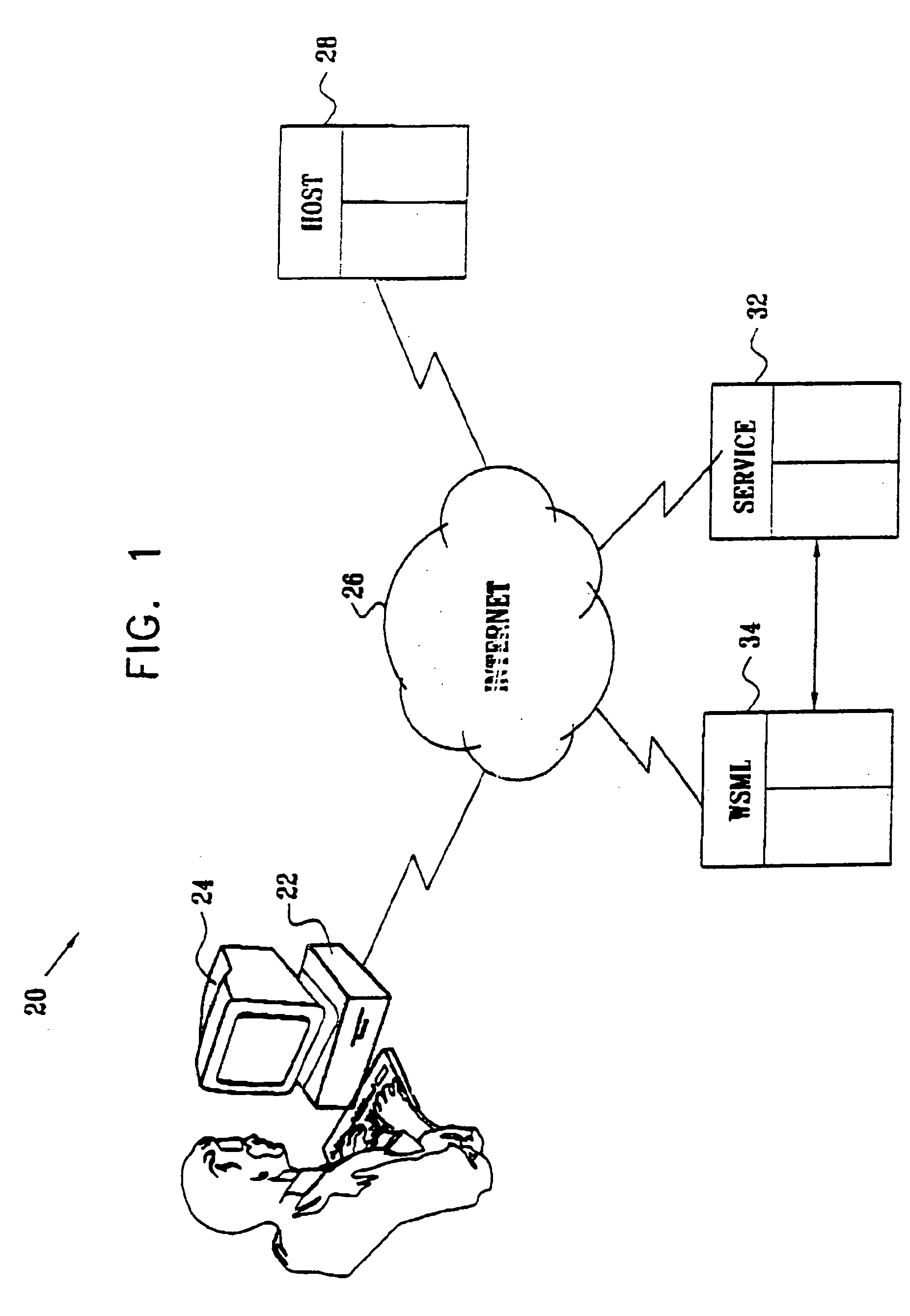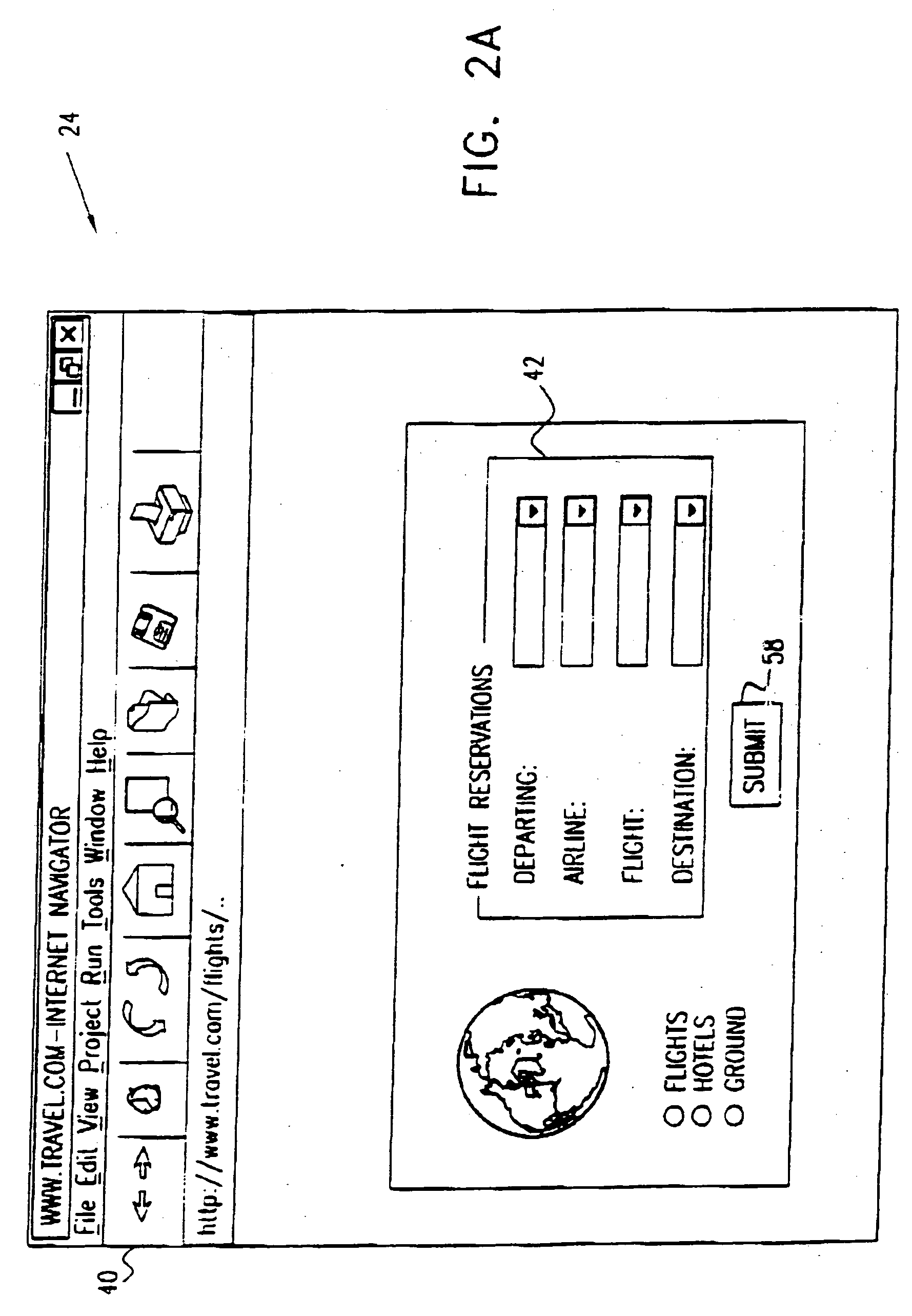Dynamic integration of Web sites
a web site and dynamic technology, applied in the field of dynamic integration of web sites, can solve the problems of low response rate, no real presence of the service provider on the host site, and no way of participating in or monitoring the activities of the service site, so as to achieve the effect of effective integration of multiple web sites, minimal development effort, and increased user exposure and revenues
- Summary
- Abstract
- Description
- Claims
- Application Information
AI Technical Summary
Benefits of technology
Problems solved by technology
Method used
Image
Examples
Embodiment Construction
System Overview
[0087]FIG. 1 is a schematic, pictorial illustration of a system 20 for dynamic Web site integration, in accordance with a preferred embodiment of the present invention. The system is intended to provide content to a client computer 22, used to browse Web sites via a network 26, typically the Internet. A browser program on computer 22, as is known in the art, reads content from the Web sites. The content is typically in the form of textual code in a mark-up language, such as HTML. The computer generates a graphic display of the content on a screen 24.
[0088] In the example shown in FIG. 1, computer 22 accesses a host site 28, comprising a Web server, as is known in the art, serving content determined by an operator of the host site. A service site 32, which similarly comprises a Web server, also serves content to users of network 26. In addition, an operator of the service site offers selected elements of the service site content as a dynamic Web page component, for i...
PUM
 Login to View More
Login to View More Abstract
Description
Claims
Application Information
 Login to View More
Login to View More - R&D
- Intellectual Property
- Life Sciences
- Materials
- Tech Scout
- Unparalleled Data Quality
- Higher Quality Content
- 60% Fewer Hallucinations
Browse by: Latest US Patents, China's latest patents, Technical Efficacy Thesaurus, Application Domain, Technology Topic, Popular Technical Reports.
© 2025 PatSnap. All rights reserved.Legal|Privacy policy|Modern Slavery Act Transparency Statement|Sitemap|About US| Contact US: help@patsnap.com



